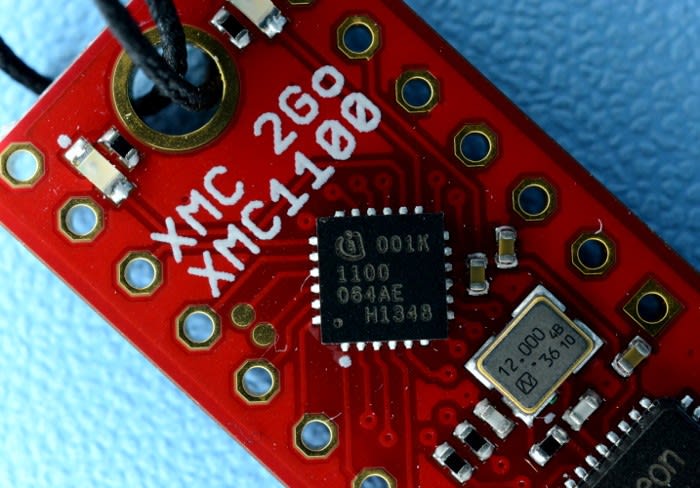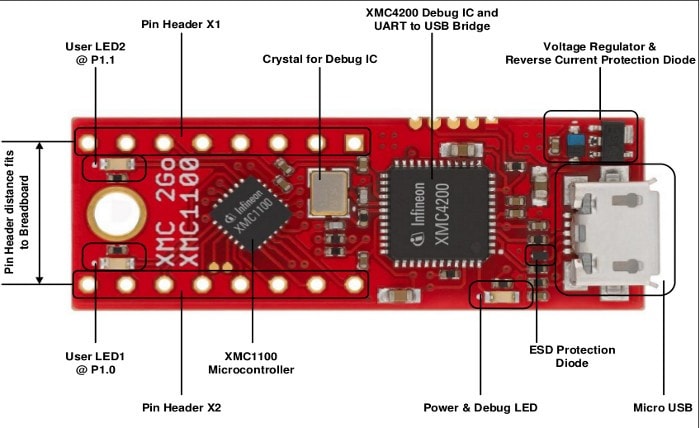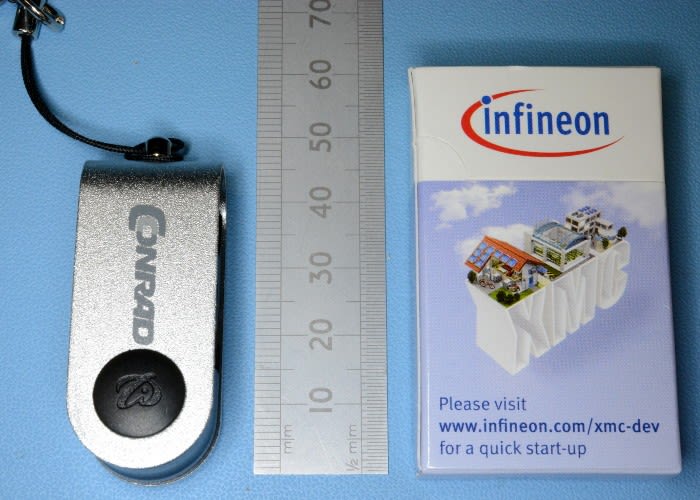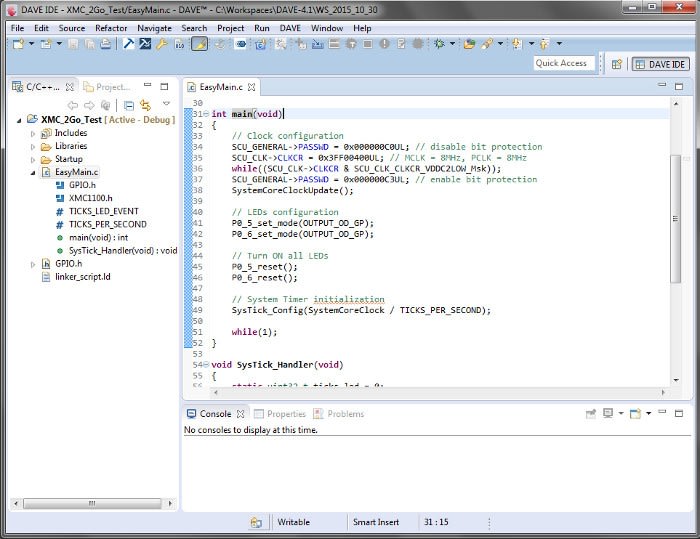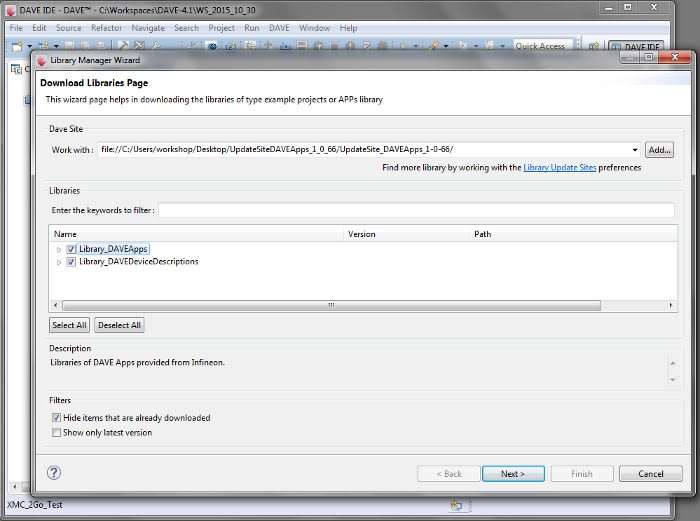A first look at the XMC 2Go Evaluation Kit
Follow articleHow do you feel about this article? Help us to provide better content for you.
Thank you! Your feedback has been received.
There was a problem submitting your feedback, please try again later.
What do you think of this article?
A fittingly compact evaluation kit for the tiny ARM Cortex-M0 powered XMC1100.
Infineon specialise in markets such as automotive and industrial power control, and are one of those companies whose products can be found embedded in so many of the things that we have come to take for granted in everyday life; from SIM cards, to laptop power management and car anti-lock braking systems, their devices getting the job done without most having to give any thought to it.
The XMC1100 from Infineon is a 32-bit ARM Cortex-M0 based microcontroller with 16Kb SRAM, that integrates numerous peripherals and is targeted at industrial applications. Available with 8-64Kb flash and 6, 8 or 12 ADC channels, packaged in 16 and 38-pin TSSOP and 24 and 40-pin VQFN, depending on the particular variant and its combination of features.
The XMC 2Go (910-6832) evaluation kit is a mere 14x28.5mm and includes an XMC1100 with 16Kb SRAM and 6-channel ADC in a TSSOP-16 package, along with a larger XMC2400 that provides a USB programming and debug interface for it. The board is also equipped with a debug/power LED and two user LEDs, plus two 8-pin 0.1” pitch pin headers for breadboard-friendly prototyping.
Source: Board Users Manual, © 2014 Infineon Technologies AG
Additional features include:
-
2 channel USIC (can be configured as UART, SPI, I2C, I2S and LIN)
-
4 x 16-bit timer
-
External interrupts
-
Real-time clock (RTC)
-
Pseudo-random number generator (PRNG)
The kit comes supplied in a padded envelope containing a compact USB A-Micro B adapter, along with the board itself packaged in a small box, plus an insert with basic instructions.
Development environment
The DAVE development platform for XC microcontrollers is free to download and based on the Eclipse IDE, GNU Compiler (GCC) and Newlib, with GNU Debugger (GDB) that has support for a J-Link Lite hardware debug probe realised in the onboard XMC2400.
The XMC Libraries (XMC Lib) provide 30 peripheral drivers that can be used with Keil, IAR and TASKING compilers, in addition to GCC. The ready-to-use APIs are categorised as follows:
-
System, e.g. DMA, flash, math, RTC, PRNG
-
Timer/PWM
-
Analog-mixed signal, e.g. ADC, DAC
-
Communication, e.g. I2C, SPI
-
Application-specific, e.g. motor position interface
Examples are included for all the aforementioned toolchains, with project files for Keil and IAR. However, those for the XMC1100 are configured for the XMC1100 Boot Kit (910-6835) board, rather than the XMC 2Go, therefore may well require modifying in order to run on the latter.
A repository of GUI configurable components, DAVE APPs, is available that can be used to automatically generate code, thereby further expediting development. These include things such as:
-
ADC/DAC
-
GPIO
-
RTOS
-
File system
-
Motor control
-
Power conversation
-
USIC (UART, SPI, I2C)
-
Motor control
-
LED lamp control
-
Display
First impressions
The XMC2 Go (910-6832) is a neat little board that makes it possible to evaluate the tiny Infineon XMC1100 microcontroller, supported by software tools that will expedite development and enable the prototyping of many applications without having to first go about writing peripheral drivers.
It's great to see that Infineon have built upon standard open source tooling such as Eclipse, GCC and Newlib, while if you happen to be more familiar with one of the popular proprietary toolchains, support is also available for using these with the provided libraries and examples.


